Renkforce C4L6400-TWP-P Handleiding
Renkforce
Niet gecategoriseerd
C4L6400-TWP-P
Bekijk gratis de handleiding van Renkforce C4L6400-TWP-P (4 pagina’s), behorend tot de categorie Niet gecategoriseerd. Deze gids werd als nuttig beoordeeld door 38 mensen en kreeg gemiddeld 4.9 sterren uit 19.5 reviews. Heb je een vraag over Renkforce C4L6400-TWP-P of wil je andere gebruikers van dit product iets vragen? Stel een vraag
Pagina 1/4

Dies ist eine Publikation der Conrad Electronic SE, Klaus-Conrad-Str. 1, D-92240 Hirschau
(www.conrad.com).
Alle Rechte einschließlich Übersetzung vorbehalten. Reproduktionen jeder Art, z. B. Fotokopie, Mik-
roverlmung, oder die Erfassung in elektronischen Datenverarbeitungsanlagen, bedürfen der schrift-
lichen Genehmigung des Herausgebers. Nachdruck, auch auszugsweise, verboten. Die Publikation
entspricht dem technischen Stand bei Drucklegung.
© Copyright 2015 by Conrad Electronic SE.
Bestimmungsgemäße Verwendung
Das Produkt dient dazu, eine Netzwerk-Verbindung über ein UTP-Kabel (Cat5E, Cat6 oder
Zweidraht-System) herzustellen. Somit lässt sich beispielsweise ohne neue Kabelverlegung
ein bereits vorhandenes einfaches UTP-Kabel zum Betrieb eines Netzwerks bzw. entsprechen-
der Netzwerkgeräte weiterverwenden.
Der Transceiver unterstützt PoE. Ein geeignetes Netzteil ist nicht im Lieferumfang und muss
getrennt erworben werden.
Die Sicherheitshinweise sind unbedingt zu befolgen!
Eine andere Verwendung als zuvor beschrieben, führt zur Beschädigung dieses Produktes,
darüber hinaus ist dies mit Gefahren, wie z.B. Kurzschluss, Brand, elektrischer Schlag etc.,
verbunden. Das gesamte Produkt darf nicht geändert bzw. umgebaut werden!
Dieses Produkt erfüllt die gesetzlichen, nationalen und europäischen Anforderungen. Alle ent-
haltenen Firmennamen und Produktbezeichnungen sind Warenzeichen der jeweiligen Inhaber.
Alle Rechte vorbehalten.
Lieferumfang
• 1x Transceiver
• 1x RJ45-Y-Verteiler
• Kurzanleitung
• Englischsprachige Bedienungsanleitung des Herstellers
Sicherheitshinweise
Bei Schäden, die durch Nichtbeachten dieser Bedienungsanleitung verur-
sacht werden, erlischt die Gewährleistung/Garantie! Für Folgeschäden über-
nehmen wir keine Haftung!
Bei Sach- oder Personenschäden, die durch unsachgemäße Handhabung
oder Nichtbeachten der Sicherheitshinweise verursacht werden, übernehmen
wir keine Haftung! In solchen Fällen erlischt die Gewährleistung/Garantie!
• Aus Sicherheits- und Zulassungsgründen (CE) ist das eigenmächtige Umbauen
und/oder Verändern des Produkts nicht zulässig.
• Das Produkt ist kein Spielzeug, es gehört nicht in Kinderhände!
• Lassen Sie das Verpackungsmaterial nicht achtlos liegen, dieses könnte für
Kinder zu einem gefährlichen Spielzeug werden.
• Sollten Sie noch Fragen haben, die in dieser Bedienungsanleitung nicht beantwor-
tet werden, so wenden Sie sich bitte an uns oder an einen anderen Fachmann.
Anschluss
In der Bedienungsanleitung des Herstellers nden Sie eine Abbildung für eine mögliche Verbin-
dung zwischen den Transceivern, zwei Endgeräten und dem Netzwerk.
Einer der Transceiver ist über ein 1:1-verbundenes Netzwerkkabel mit dem vorhandenen Netz-
werk zu verbinden (z.B. mit einem Switch oder Router).
Achten Sie dabei darauf, den Anschluss neben der Niedervolt-Rundbuchse zu ver-
wenden und nicht den TWP-Anschluss!
An diesem Transceiver ist außerdem ein geeignetes Netzteil anzuschließen (nicht im Lieferum-
fang, getrennt bestellbar), das die Spannungs-/Stromversorgung für PoE zur Verfügung stellt
(48 V/DC, Ausgangsleistung abhängig von den angeschlossenen Geräten).
Die anderen Transceiver sind über den RJ45-Anschluss mit den Endgeräten zu verbinden, bei-
spielsweise einer Netzwerkkamera, einem Accesspoint usw. Sofern Sie PoE-fähige Endgeräte
verwenden, liefern die Transceiver später die erforderliche Energie zum Betrieb.
Achten Sie dabei darauf, den Anschluss neben der Niedervolt-Rundbuchse zu ver-
wenden und nicht den TWP-Anschluss!
Stellen Sie nun zwischen den Transceivern (über die TWP-Anschlüsse) die Kabelverbindung
her; für den Betrieb von zwei Endgeräten liegt ein RJ45-Y-Verteiler bei. In diesem Fall benöti-
gen Sie weitere Netzwerkkabel zum Anschluss der Transceiver an den RJ45-Y-Verteiler.
Insgesamt lassen sich auf diese Weise bis zu vier Endgeräte betreiben (für jedes
Endgerät ist jeweils ein Transceiver erforderlich).
Bei der Inbetriebnahme nden sich die Transceiver selbst, es ist also keine Konguration nötig.
Für spezielle Anwendungszwecke können die Transceiver aneinander angelernt („Joining“)
bzw. getrennt („Un-Joining“) werden. Informationen dazu nden Sie in der englischsprachigen
Bedienungsanleitung des Herstellers.
Beispiel für 2 Endgeräte (Anschlussposition am RJ45-Y-Verteiler ist belanglos):
Beispiel für ein Endgerät:
A = Endgerät 1
B = Endgerät 2
C = Verbindung zu Switch/Router
D = Externes Netzteil (48 V/DC, Ausgangsleistung abhängig von den angeschlossenen Ge-
räten)
Ein „Endgerät“ ist beispielsweise eine IP-Überwachungskamera, ein Accesspoint,
ein weiterer Switch oder ein VoIP-Telefon usw.
Die Power-LED leuchtet bei vorhandener Spannungs-/Stromversorgung über ein Netzteil. Die
TWP-LED leuchtet, wenn eine Datenverbindung über das UTP-Kabel existiert, die PoE-LED
bei vorhandener PoE-Verbindung.
Für eine feste Montage stehen am Gehäuse entsprechende Öffnungen zur Verfügung. Sie
können zur Befestigung aber auch doppelseitiges Klebeband oder Kabelbinder einsetzen.
Entsorgung
Elektrische und elektronische Geräte gehören nicht in den Hausmüll.
Entsorgen Sie das Produkt am Ende seiner Lebensdauer gemäß den geltenden
gesetzlichen Bestimmungen.
Technische Daten
Netzwerk ............................... 10/100Base T, halb-/vollduplex, IEEE802.3 af/at
Anschluss .............................RJ45
Frequenzband ...................... 1,8 bis 30 MHz
UTP-Kabellänge ................... Max. bis zu 500 m (abhängig von der Qualität des verwendeten
UTP-Kabels/Stecker usw.)
Betriebsspannung ................. 48 V/DC (über externes Netzteil)
Leistungsaufnahme ..............ca. 2,5 W
Betriebstemperatur ...............-10 °C bis +50 °C
Betriebsluftfeuchte ................0% bis 90% relative Luftfeuchte, nicht kondensierend
Abmessungen .......................42 x 40 x 102,5 mm (B x H x L)
D B E D I E N U N G S A N L E I T U N G www.conrad.com
Netzwerk-Verlängerung
über UTP
Best.-Nr. 800916
Version 02/15
A
B
C
D
A
C
D

This is a publication by Conrad Electronic SE, Klaus-Conrad-Str. 1, D-92240 Hirschau
(www.conrad.com).
All rights including translation reserved. Reproduction by any method, e.g. photocopy, microlming,
or the capture in electronic data processing systems require the prior written approval by the editor.
Reprinting, also in part, is prohibited. This publication represent the technical status at the time of
printing.
© Copyright 2015 by Conrad Electronic SE.
A
B
C
D
A
C
D
Intended use
The product is used to set up a network connection via UTP cable (Cat5E, Cat6 or two wire-
system). Therefore, it is possible to continue using a simple, existing UTP cable in order to
operate a network or corresponding network devices without laying a new cable.
The transceiver supports PoE. The corresponding power supply unit is not enclosed but needs
to be purchased separately.
The safety instructions must be observed at all times!
Any use other than that described above could lead to damage to this product and involves
the risk of short circuits, re, electric shock, etc. No part of the product may be modied or
converted.
This product complies with the applicable national and European requirements. All names of
companies and products are the trademarks of the respective owners. All rights reserved.
Contents
• 1x transceiver
• 1x RJ45-Y distributor
• Quick guide
• Manufacturer’s operating instructions in English
Safety Instructions
The warranty will be void in the event of damage caused by failure to observe
these safety instructions! We do not assume any liability for any resulting
damage!
We shall not accept liability for damage to property or personal injury caused
by incorrect handling or non-compliance with the safety instructions! The
warranty will be void in such cases!
• Unauthorised conversion and/or modication of the product is not allowed for
safety and approval reasons (CE).
• The product is not a toy and should be kept out of the reach of children!
• Do not leave packaging material carelessly lying around, since it could become a
dangerous plaything for children.
• If you have any questions that are not answered in this manual, please contact our
technical service or another specialist.
Connection
The manufacturer’s operating instructions include an illustration for a possible connection be-
tween the transceivers, two terminals and the network.
One of the transceivers should be connected to the existing network using a network cable
(e.g. via switch or router).
Be sure to not to use the TWP-connector but the connector next to the low-voltage
female connector!
You also have to connect an appropriate power supply unit to the transceiver (not enclosed,
to be ordered separately) which provides the power end electricity supply for PoE (48 V/DC,
output power depending on the connected devices).
The other transceivers should be connected to the terminals using the RJ45-connector, e.g.
a network camera, an access point and so on. In case you are using terminals that are PoE-
ready, the transceiver will later provide the required energy for the operation.
Be sure to not to use the TWP-connector but the connector next to the low-voltage
female connector!
Then, establish the cable connection between the transceivers (using the TWP-connectors),
enclosed you will nd a RJ45-Y distributor for the operation of two terminals. In that case, you
will need more network cables for the connection of the transceiver to the RJ45-Y distributor.
That way, it is possible to operate a total of four terminals (each terminal requires
one transceiver).
When setting up the device, the transceivers will nd themselves, therefore no conguration
is required.
For special operation purposes, the transceivers can be leaned against each other (“Joining”)
or separated (“Un-Joined”). Respective information can be found in the manufacturer’s operat-
ing instructions in English.
Example for 2 terminals (connection position on the RJ45-Y distributor is irrelevant):
Example for one terminal:
A = terminal 1
B = terminal 2
C = connection to switch/router
D = External power adapter (48 V/DC, output dependent upon the connected devices)
One “terminal” is, for example, an IP-surveillance camera, one access point, another
switch or a VoIP-telephone and so on.
The power-LED is lit when power/electricity is provided by the power supply unit. The TWP-
LED is lit, if a data connection via UTP-cable has been established, the PoE-LED is lit with an
existing PoE-connection.
Corresponding ports are provided on the housing for the installation. You can, however, also
use a double-sided adhesive tape or a cable xer.
Disposal
Electrical and electronic devices should not be disposed of in the household
waste.
Dispose of an unserviceable product in accordance with the relevant statutory regu-
lations.
Technical data
Network ................................ 10/100Base T, half-/full-duplex, IEEE802.3 af/at
Conector ............................... RJ45
Frequency band .................... 1.8 to 30 MHz
UTP cable length .................. Up to 500 m max. (depending on the quality of the used UTP
cable/plug and so on)
Operating voltage ................. 48 V/DC (via an external power supply unit)
Power consumption .............. approx. 2.5 W
Operating temperature ......... -10 °C to +50 °C
Operational air humidity ........ 0% to 90% relative air humidity, non-condensing
Dimensions ........................... 42 x 40 x 102.5 mm (W x H x D)
G O P E R A T I N G I N S T R U C T I O N S www.conrad.com
Network extension
via UTP
Item no. 800916
Version 02/15

Ceci est une publication de Conrad Electronic SE, Klaus-Conrad-Str. 1, D-92240 Hirschau
(www.conrad.com).
Tous droits réservés, y compris de traduction. Toute reproduction, quelle qu‘elle soit (p. ex. photo-
copie, microlm, saisie dans des installations de traitement de données) nécessite une autorisation
écrite de l‘éditeur. Il est interdit de le réimprimer, même par extraits. Cette publication correspond au
niveau technique du moment de la mise sous presse.
© Copyright 2015 by Conrad Electronic SE.
A
B
C
D
A
C
D
Utilisation conforme
Ce produit sert à établir une liaison réseau au moyen d’un câble UTP (Cat5E, Cat6 ou sys-
tème deux ls). Cela permet, par exemple, d’utiliser un câble UTP déjà existant pour le fonc-
tionnement d’un réseau ou des dispositifs réseau correspondants sans nécessiter la pose de
nouveaux câbles.
L’émetteur-récepteur supporte PoE. Un bloc d’alimentation approprié n’est pas inclus dans
l’étendue de la fourniture et doit être commandé séparément.
Les consignes de sécurité doivent impérativement être observées !
Toute utilisation autre que celle décrite précédemment peut endommager l’appareil. De plus,
elle s’accompagne de dangers tels que court-circuit, incendie, électrocution, etc. Aucun com-
posant du produit ne doit être modié ni transformé !
Ce produit est conforme aux prescriptions légales, nationales et européennes. Tous les noms
d’entreprises et les appellations d’appareils gurant dans ce manuel d’utilisation sont des
marques déposées de leurs propriétaires respectifs. Tous droits réservés.
Étendue de la livraison
• 1x émetteurs-récepteurs
• 1x distribution RJ45-Y
• Guide rapide
• Manuel d’utilisation du fabricant, en langue anglaise
Consignes de sécurité
Tout dommage résultant d’un non-respect du présent manuel d’utilisation en-
traîne l’annulation de la garantie ! Nous déclinons toute responsabilité pour
les dommages consécutifs !
Nous déclinons toute responsabilité pour des dommages matériels ou cor-
porels dus à un maniement inapproprié ou au non-respect des consignes de
sécurité ! Dans de tels cas, la garantie prend n !
• Pour des raisons de sécurité et d’homologation (CE), il est interdit de modier la
construction ou de transformer l’appareil soi-même.
• Ce produit n’est pas un jouet, ne pas le laisser à la portée des enfants !
• Ne pas laisser traîner le matériel d’emballage. Cela pourrait constituer un jouet
dangereux pour les enfants.
• S’il vous reste encore des questions après la lecture de ce manuel d’utilisation,
veuillez nous contacter ou vous adresser à un spécialiste.
Raccordement
Le manuel d’utilisation du fabricant contient une gure représentant une liaison possible entre
les émetteurs-récepteurs, deux terminaux et le réseau.
L’un des émetteurs-récepteurs doit être raccordé au réseau au moyen d’un câble de réseau 1:1
(par ex. avec un commutateur ou un routeur).
Veillez à utiliser la prise à côté de la prise ronde basse tension et non pas la prise
TWP !
Cet émetteur-récepteur doit également être relié à un bloc d’alimentation approprié (non com-
pris dans l’étendue de la fourniture, à commander séparément) qui assure l’alimentation en
tension/courant pour PoE (48 V/DC, puissance de sortie en fonction des dispositifs raccordés).
Les autres émetteurs-récepteurs doivent être reliés aux terminaux via une prise RJ45, par ex.
une caméra réseau, un point d’accès etc. Si vous utilisez des terminaux supportant PoE, les
émetteurs-récepteurs vont par la suite fournir l’énergie requise pour le fonctionnement.
Veillez à utiliser la prise à côté de la prise ronde basse tension et non pas la prise
TWP !
Maintenant il convient d’établir la liaison par câble entre les émetteurs-récepteur (via prises
TWP) ; une distribution RJ45-Y a été fournie pour le fonctionnement avec deux terminaux.
Dans ce cas, vous avez besoin d’autres câbles réseau pour le raccordement des émetteursré-
cepteurs à la distribution TJ45-Y.
De cette façon il est possible d’utiliser jusqu’à quatre terminaux (il faut un émetteur-
récepteur respectivement pour chaque terminal).
Lors de la mise en service, les émetteurs-récepteurs se détectent automatiquement, aucune
conguration n’est nécessaire.
Pour des applications spéciales, les émetteurs-récepteurs peuvent être soumis à un apprentis-
sage (« Joining ») ou être séparés (« Un-Joining »). Vous trouverez des informations à ce sujet
dans le manuel d’utilisation en langue anglaise du fabricant.
Exemple pour 2 terminaux (position de prise sur la distribution RJ45-Y est sans importance) :
Exemple pour un terminal :
A = terminal 1
B = terminal 2
C = liaison au commutateur/routeur
D =
Adaptateur secteur externe (48 V/CC, tension de sortie dépendant des appareils connectés)
Un « terminal » est par exemple une caméra de surveillance IP, un point d’accès, un
commutateur supplémentaire ou un téléphone VoIP, etc.
La LED d’alimentation est allumée en présence d’une alimentation en tension/courant via un
un bloc d’alimentation. La LED TWP est allumée quand une liaison de données est établie par
le câble UTP, la LED PoE est allumée quand la liaison PoE est établie.
Le boîtier est prévu avec des orices appropriés pour le montage xe. Mais la xation peut
également être assurée par un ruban adhésif double face ou des serre-câbles.
Élimination
Les appareils électriques et électroniques ne doivent pas être jetés avec les déchets
ménagers.
Procédez à l’élimination du produit au terme de sa durée de vie conformément aux
dispositions légales en vigueur.
Caractéristiques techniques
Réseau .........................................10/100Base T, semi-duplex/duplex, IEEE802.3 af/at
Prise .............................................RJ45
Bande de fréquences ...................1,8 à 30 MHz
Longueur de câble UTP ................ jusqu’à 500 m max (en fonction de la qualité du câble/che
UTP utilisé(e) etc.)
Tension de service .......................48 V/DC (via bloc d’alimentation externe)
Puissance absorbée .....................env. 2,5 W
Température de service ................- 10 °C à + 50 °C
Humidité ambiante de service .....0 % à 90 % d’humidité relative de l’air, sans condensation
Dimensions ...................................42 x 40 x 102,5 mm (l x h x L)
F M O D E D ’ E M P LO I www.conrad.com
Prolongation de réseau
via UTP
N° de commande 800916
Version 02/15
Product specificaties
| Merk: | Renkforce |
| Categorie: | Niet gecategoriseerd |
| Model: | C4L6400-TWP-P |
Heb je hulp nodig?
Als je hulp nodig hebt met Renkforce C4L6400-TWP-P stel dan hieronder een vraag en andere gebruikers zullen je antwoorden
Handleiding Niet gecategoriseerd Renkforce
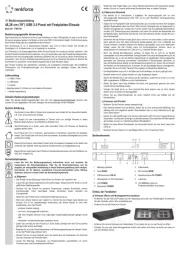
5 Juli 2025
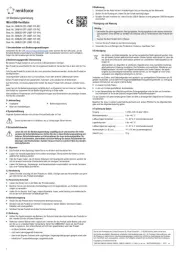
1 Juli 2025
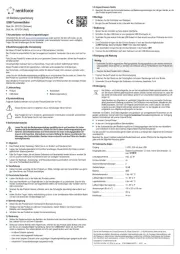
1 Juli 2025
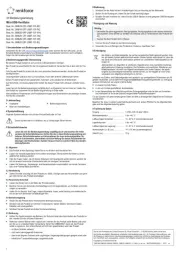
1 Juli 2025

3 Juni 2025
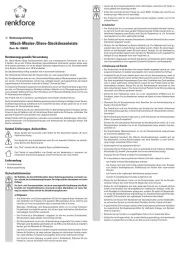
22 Mei 2025
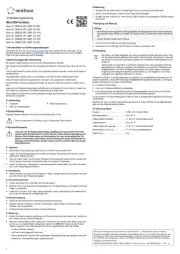
7 Mei 2025
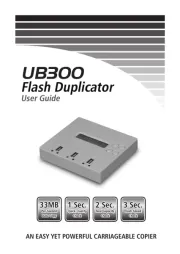
1 Mei 2025

14 Januari 2025

18 Maart 2024
Handleiding Niet gecategoriseerd
- NVEESHOX
- Kingston
- Twinkly
- Hangman
- SatKing
- Bearware
- Cinderella
- Juice Goose
- Gembird
- COMSOON
- Bestar
- Adax
- Kaona
- Mac Audio
- Plum
Nieuwste handleidingen voor Niet gecategoriseerd
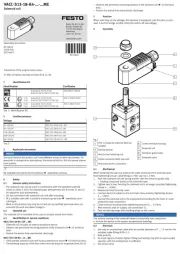
1 Augustus 2025
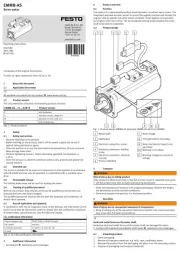
1 Augustus 2025
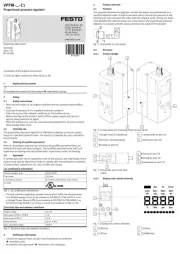
1 Augustus 2025
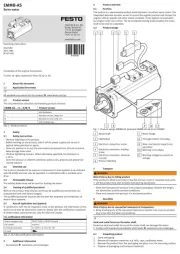
1 Augustus 2025
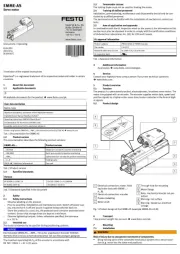
1 Augustus 2025
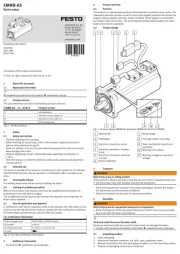
1 Augustus 2025
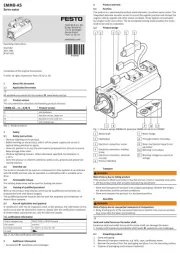
1 Augustus 2025
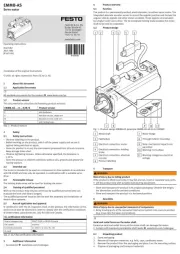
1 Augustus 2025
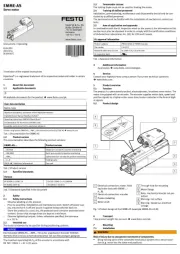
1 Augustus 2025
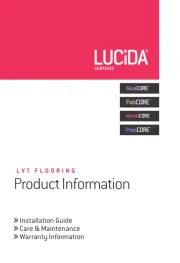
1 Augustus 2025